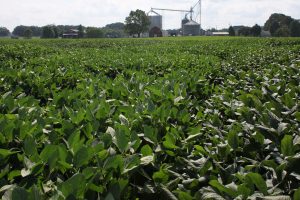April planting is thought to have an advantage over May planting because we can shift the development of soybean to an earlier time of the year where there is more sunlight. More total sunlight per day should result in greater yields. But, does this hold up in Virginia? Likewise, an earlier variety will also shift maturity, and the critical stages of development, to a time of the year when the days are longer. So in theory, planting early-maturing varieties early should result in the greatest yields.
My concern is that when you shift your development to earlier times of the year, you are also placing the most critical pod and seed development stages in a hotter and drier time of the year. While you could possibly alleviate the dry part with irrigation, I know of no way to keep the temperature from rising.
To test these hypotheses, we planted 10 to 12 varieties ranging in maturity from late-3’s to early-6’s in April, May, and June at three Virginia locations in 2017 and 2018. I’m not going to show the data because we found relative maturity responded differently depending on location, and it would just take up too much room to show all the graphs. However, we have seen no benefit to planting soybean in April versus May, although April plantings did not usually yield less than May plantings. Maturity group response depended more on location and when the rain fell.
So, I suggest that you base your planting date and or relative maturity decisions on your need to spread out planting or harvesting. April planting date is OK, but not necessary for greater yields. Keep in mind that soils are usually cooler in April, so it will normally take soybean longer to emerge than when planted in May. Fungicides will be needed for April and early-May plantings.
Planting a slightly earlier maturing soybean is usually OK also. For more information on maturity selection, see my previous blog, “Improving Your Soybean Variety Selection Decisions – What maturity is best?”
If you do plant in April and/or want to use early-maturing varieties, then do this on your best soils. If you move the critical stages of development to a hotter and drier time of the year, you’ll need the greater water-holding capacity of those soils.

